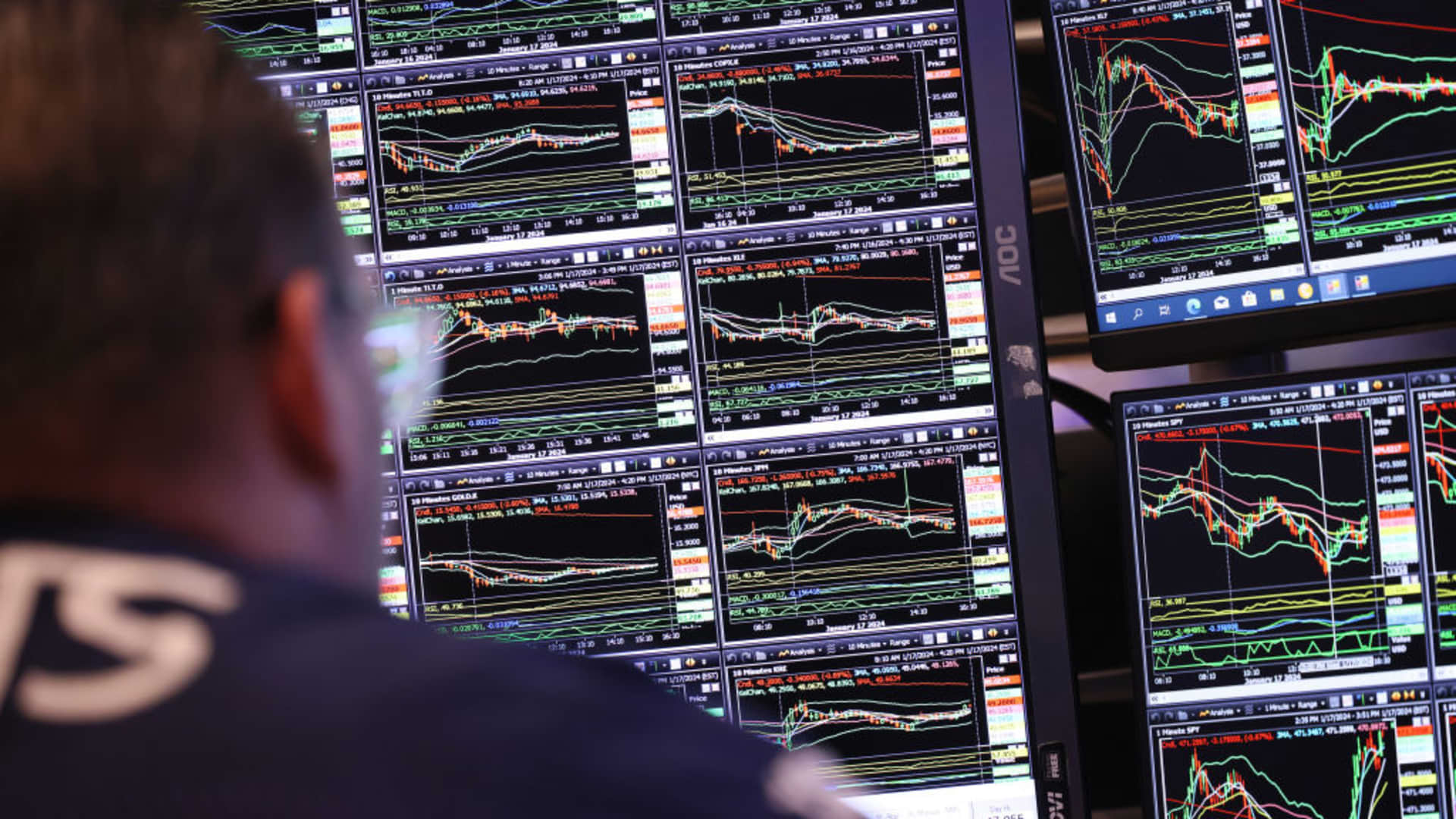
Traders work on the floor of the New York Stock Exchange during afternoon trading on January 17, 2024 in New York City.
Michael M. Santiago | Getty Images News | Getty Images
Passive investment products have long been pulling in the lion’s share of money from investors, but as 2023 came to a close they achieved a milestone: holding more assets than their actively managed counterparts.
The total assets under management in exchange-traded funds and notes along with passively managed mutual funds reached a combined $13.29 trillion at the end of December, nudging above the $13.23 trillion held in active assets, according to Morningstar.
While passively managed stock funds long ago took the lead, this was the first time that passively managed products surpassed active across all asset classes combined.
“It’s been a long time coming,” said Nicholas Colas, co-founder of DataTrek Research and one of Wall Street’s closest trackers of the ETF industry since it first started drawing investor attention. “Last year with equities it was a very difficult year for active outperformance. … It was a year when you had an initial burst of enthusiasm for a few months, then a pullback and then a rush at the end. Kind of a nightmare scenario for an active manager.”
Indeed, just in large-cap blended funds alone, passive funds raked in a net $192.8 billion for the year while active funds lost $48.6 billion, Morningstar reported. Large-cap growth funds saw a net $38.3 billion move to passive funds while active lost $91.2 billion.

That movement in money accompanied a rough year for stock pickers. Just 38% of large-cap active funds outperformed their Russell index benchmarks, down from 47% in 2022 although around the long-term average, according to Bank of America.
In contrast, passive funds, which primarily track market indexes such as the S&P 500, Dow Jones Industrial Average and Nasdaq Composite, had a strong year thanks to a big performance from the broader market. The S&P 500 alone had a 24% return for the year.
“You had to be right there when the liftoff happened going into November and December,” Colas said. “In many ways, it was the hardest possible environment for active managers to keep their cool, stay focused and not get overly optimistic or pessimistic.”
Adding to the challenges was the performance of the “Magnificent 7” tech-centric stocks — Alphabet, Microsoft, Apple, Tesla, Nvidia, Meta and Amazon — which carried most of the weight for the market. The Nasdaq 100, which is weighted toward technology, exploded 55% higher last year on a total return basis.
“You had this remarkable market leadership in Big Tech and some managers can’t own it because of mandates or a reluctance to have 25%-plus of their portfolio in a handful of names,” Colas said.
Still, there could be hope ahead for active management if market conditions change in 2024.
“As far as what a stock-pickers market looks like, it’s basically a low-volatility, low-correlation market without a lot of drawdowns that instill fear into money managers and force them to sell at the bottom,” Colas said. “This could be that kind of year.”
Don’t miss these stories from CNBC PRO:
